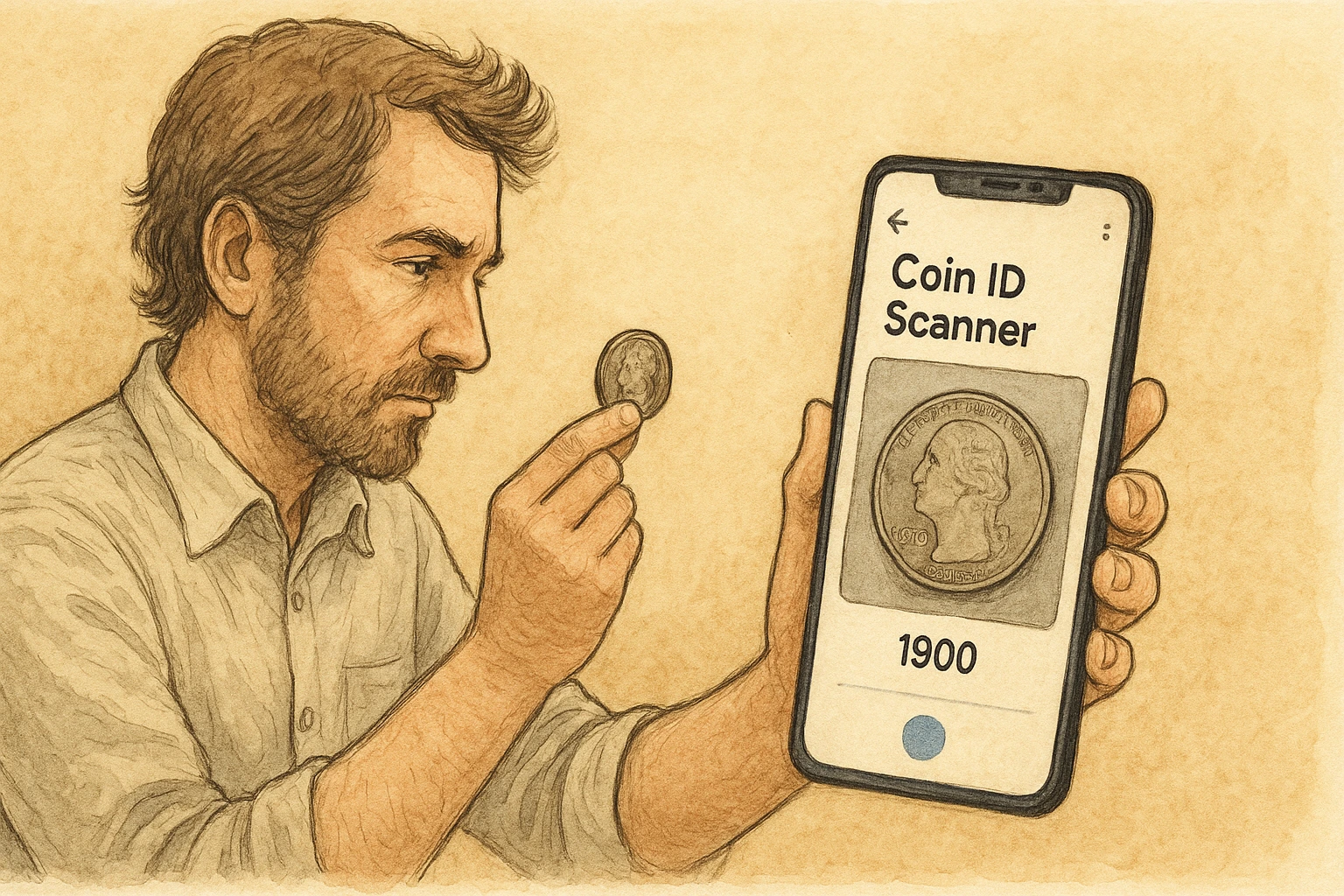Starting a coin collection can feel overwhelming, especially for beginners trying to decode mint marks, dates, and die varieties. One of the most accessible and exciting ways to enter the world of numismatics is through roll of quarters hunting—a practice of acquiring and searching through coin rolls in hopes of finding hidden gems.
For those wondering whether this method is truly worth the time and effort, the answer depends on your goals, expectations, and the tools you use to support your journey.
Before we dive into strategies and success stories, let’s understand what coin rolls are and why so many collectors swear by them.

What Are Coin Rolls and Why Use Them?
Coin rolls are cylindrical stacks of coins of the same denomination, wrapped in paper or plastic. You’ve likely seen them at banks—penny rolls, nickel rolls, quarter rolls, and so on—often distributed in specific amounts (e.g., 50 pennies for $0.50). These rolls are used by banks, retailers, and the U.S. Mint to organize and transport coins efficiently. But for collectors, they offer a deeper appeal.
Rather than hunting for coins in your pocket change one at a time, coin rolls let you sort through dozens or even hundreds of coins in a single session, increasing your odds of finding something valuable. Whether it’s a rare date, a mint error, or a pristine uncirculated specimen, each roll is an unopened opportunity.
Benefits for Collectors
Coin rolls aren’t just about volume—they offer genuine advantages for numismatists, especially beginners looking for an affordable and educational start.
Easy Access to Bulk Coins
Coin rolls provide access to dozens of coins in one purchase, giving collectors a statistical edge. You may not strike gold every time, but the sheer quantity boosts your odds of uncovering rarities, errors, or older issues that have slipped into circulation.
Preservation
Coins stored in rolls—especially those straight from the bank—are typically better preserved than loose change. While circulated coins may show signs of wear, uncirculated or lightly handled coins inside rolls can retain their luster and condition, adding real value to your collection.
Organization and Storage
Coin rolls make storage far more efficient. For those who prefer tidy, space-saving methods over messy piles or scattered finds, coin rolls are a dream. They’re stackable, easy to label, and simplify the process of keeping track of duplicates or sets.
Affordable Entry Point
One of the greatest appeals of coin roll hunting is cost-efficiency. You’re paying face value for the coins in most cases—especially if you’re buying directly from banks. That means your financial risk is virtually zero. Even if you don’t find a rare coin, you can still use or deposit the coins later.
Here’s a quick table summarizing the practical advantages:
| Benefit | Explanation |
| Bulk Quantity | More coins = higher chance of discoveries |
| Low Cost | Most rolls are sold at face value, especially at banks |
| Condition Control | Bank-wrapped rolls often contain better-preserved coins |
| Convenient Storage | Stackable and easy to organize |
| Beginner Friendly | Requires no upfront knowledge to get started |
The Risks and Realities of Coin Roll Hunting
While coin rolls are a favorite among seasoned and casual collectors alike, the process can be hit-or-miss. Here’s what beginner numismatists should keep in mind:
Unpredictable Value
The vast majority of coin rolls—especially those from banks—are filled with modern circulating coins. Most have little to no premium value beyond face. The chance of discovering a rare key date, a silver coin, or a valuable error exists, but statistically, it’s rare. Think of it like fishing in a vast lake: some days you catch nothing, and other days you snag a beauty.
Searched vs. Unsearched Rolls
Not all rolls are created equal. Bank-wrapped rolls are typically untouched and offer the best chance of finding unexpected treasures. In contrast, customer-wrapped rolls or those sold online as “unsearched” are often misleading—many sellers have already scanned them for anything valuable and may be repackaging leftover coins.
Here’s a comparative overview:
| Roll Type | Pros | Cons |
| Bank-Wrapped Rolls | Unsearched, consistent, face value | Mostly modern, limited rare finds |
| Customer-Wrapped Rolls | Mixed content, possible old coins | Often picked over, unknown origin |
| Online “Unsearched” | May contain better coins (if honest) | Frequently overpriced and misleading |
Time Commitment
Sorting through hundreds or even thousands of coins requires patience and focus. It’s a rewarding hobby, but not a shortcut to riches. Some collectors go through 10+ rolls before finding a coin worth keeping. If you’re looking for fast results or get bored easily, this may test your endurance.
Coin Condition Often Disappoints
Many coins in circulation-based rolls show wear, scratches, and discoloration. Only coins in uncirculated or mint state(MS) condition typically carry strong numismatic premiums. Unless you’re very lucky, rolls will include mostly average, worn specimens.
Tip: If you do find a potentially valuable coin, make sure to inspect it under proper lighting and consult reference guides—or better, use tools like Coin ID Scanner.

Are Coin Rolls Worth It for Beginners?
The answer isn’t black and white. It depends on your collecting style, goals, and patience level. Below is a breakdown of different collecting mindsets and whether coin rolls are a match:
Yes, They’re Worth It If You:
- Enjoy the hunt. If you like the detective work and surprise factor, coin roll hunting is right up your alley.
- Want to build foundational knowledge. You’ll learn fast—from identifying mint marks to spotting key dates and varieties.
- Prefer low-risk collecting. Since you’re paying face value for most rolls, the financial barrier is minimal.
- Appreciate the educational value. You’ll gain hands-on experience with coin types, mint marks, and condition grading.
Not Always Worth It If You:
- Focus only on high-value coins. You’re better off buying slabbed or graded coins from certified dealers or auctions.
- Lack time or patience. Hunting through rolls isn’t for the time-crunched or easily frustrated.
- Want an investment-first approach. Coin rolls are more about discovery and passion than guaranteed returns.
Here’s a quick summary table for decision-making:
| Collector Type | Are Coin Rolls a Good Fit? |
| Beginner with curiosity and low budget | Yes |
| Advanced collector seeking specific rarities | Not ideal |
| History and variety enthusiast | Yes |
| Investment-focused buyer | Better to buy certified |
The takeaway: coin rolls are ideal for exploration, not instant profit. If you go in with realistic expectations, you’ll enjoy the journey a lot more. In the next section, we’ll show you how to make that journey smarter and more efficient—especially with modern tools like Coin ID Scanner, which brings AI precision into your coin hunting adventure. Stay tuned.
Tips for Getting Started
Before you pick up your first roll of coins, keep these proven strategies in mind:
Source Bank-Wrapped Rolls
Start by visiting your local bank and requesting coin rolls of various denominations. Bank-wrapped rolls are often unsearched and can contain uncirculated coins or overlooked varieties. Most banks are happy to sell them at face value.
Avoid Overpaying Online
Online sellers offering “unsearched” rolls at a premium often exaggerate or misrepresent their value. Unless you’re buying from a reputable coin dealer, assume the rolls have already been picked over. Stick to face-value sources whenever possible.
Educate Yourself
Understanding what to look for significantly improves your odds of success. Learn to recognize:
- Key dates and low-mintage years
- Double die obverses (DDO) and reverse (DDR)
- Repunched mint marks (RPM)
- Silver compositions (pre-1965 dimes, quarters, half dollars)
Bookmark trusted sources like PCGS, NGC, or Numista—or better yet, use an app that does all of this instantly.
Keep a Log
Maintain a personal record of what you’ve found, how many rolls you’ve searched, and any patterns you notice. Over time, this log will become your personal roadmap to smarter hunting.
Maximizing the Experience With the Coin ID Scanner App
Sorting through hundreds of coins manually can be fun, but it also leaves room for missed details, misidentifications, and general fatigue. Enter Coin ID Scanner—a modern, AI-powered app that makes the entire process faster, smarter, and more rewarding.
Here’s why it’s become a must-have for beginner and advanced collectors alike:
| Feature | Benefit |
| Coin Identification by Photo | Just snap a photo—get mint year, country, type, edge, metal, and value instantly |
| Collection Management | Organize finds in a secure digital gallery; avoid duplicates and track wishlist items |
| Extensive Global Database | 187,000+ coins; includes rare issues from all over the world |
| AI Coin Helper | Get real-time support while hunting; ideal for identifying unfamiliar coins on the fly |
Whether you’re scanning coins in real time during a roll search or organizing your weekend finds afterward, Coin ID Scanner transforms the hobby into a guided, efficient experience. No more flipping through outdated catalogs or relying on guesswork.
Coin rolls may not make you rich overnight—but they will make you a better collector. The practice teaches discipline, observation, and historical insight. For beginners, it’s a low-risk, high-reward way to build knowledge, spot patterns, and uncover hidden value one coin at a time.
By combining traditional roll hunting with modern tools like Coin ID Scanner, you’re giving yourself the best of both worlds: the excitement of discovery and the precision of technology. That’s a powerful combo.
So grab your first roll, open your scanner, and get ready to find history wrapped in paper.
Happy collecting — and may your next roll hold a surprise worth keeping.



